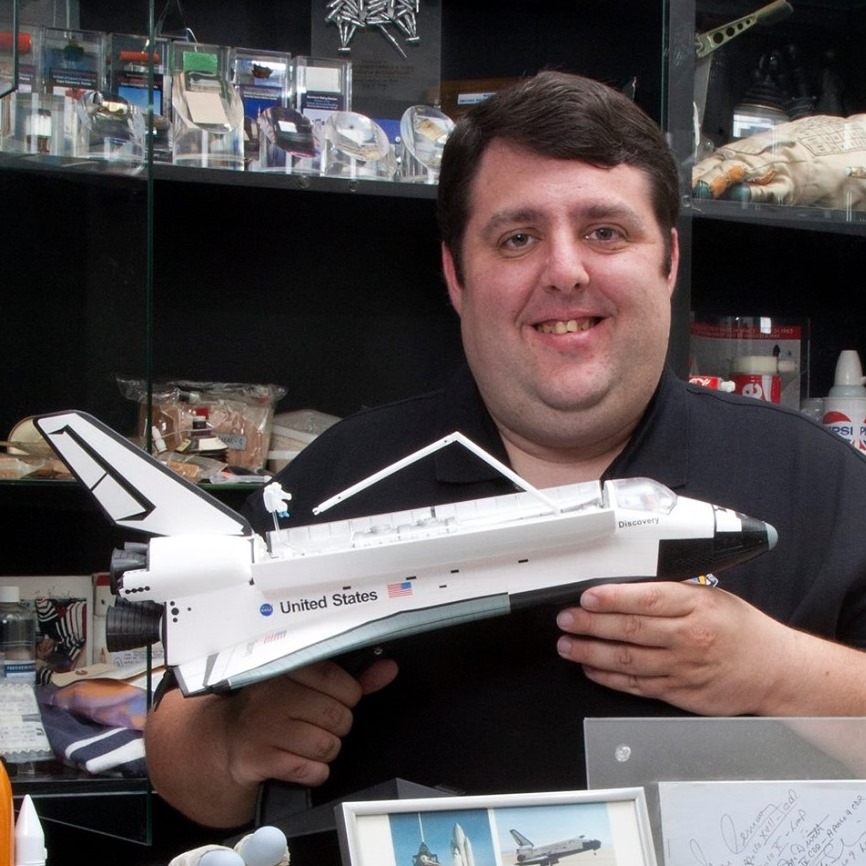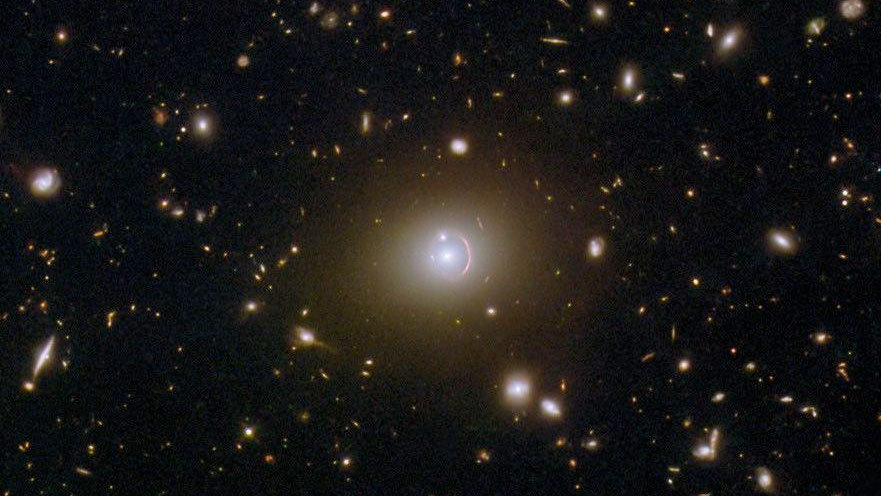From near to far, from here to there, Hubble sees galaxies everywhere | Space photo of the day for May 22, 2025
With apologies to Dr. Seuss, a stunning Hubble Space Telescope image offers a look at a trio of distant galaxies.
The red arc at the center of this Hubble Space Telescope image is a distant galaxy, called HerS 020941.1+001557. It appears to be partially circling another galaxy, SDSS J020941.27+001558.4, and seems to be intersected in part by the curving, red crescent of light of another remote galaxy, SDSS J020941.23+001600.7,
What is it?
The alignment of the three galaxies creates a type of gravitational lens called an Einstein ring.
Gravitational lenses occur when the light from a very distant object bends (or is "lensed") around a massive (or "lensing") object located between Earth and the distant lensed galaxy. When the lensed object and the lensing object align, they create an Einstein ring.
Einstein rings can appear as a full or partial circle of light depending on how precise the alignment is. The effects of this phenomenon only become clear when dealing with curvatures of light on enormous, astronomical scales.
Where is it?
HerS 020941.1+00155 is now 19.5 billion light-years from Earth, but it appears in the image as it did around 11 billion years ago, when the galaxy was 5.5 billion light-years away and its light began the long journey toward Earth through expanding space.
SDSS J020941.27+001558.4 is located some 2.7 billion light-years away.
Why is it amazing?
The partial Einstein ring in this image was identified by a citizen scientist as part of the SpaceWarps project, which asked the public to search for gravitational lenses in images.
Breaking space news, the latest updates on rocket launches, skywatching events and more!
Computers can be programmed to recognize gravitational lensing, but the effects can be easily confused for galaxies that look similar to a distorted background galaxy. Also, in order for the computer to run fast enough to analyze lots of images quickly, they have to cut a lot of corners, and this makes them less effective.
Human beings have a remarkable ability to recognize patterns. With a basic understanding of what the distorted images of galaxies that have passed through a gravitational lens look like, participants in the SpaceWarps project can help discover new examples of this amazing phenomenon, as was the situation in this case.
Want to learn more?
You can read more about the SpaceWarps project and the basics of gravitational lensing.

Robert Pearlman is a space historian, journalist and the founder and editor of collectSPACE.com, a daily news publication and community devoted to space history with a particular focus on how and where space exploration intersects with pop culture. Pearlman is also a contributing writer for Space.com and co-author of "Space Stations: The Art, Science, and Reality of Working in Space” published by Smithsonian Books in 2018.
In 2009, he was inducted into the U.S. Space Camp Hall of Fame in Huntsville, Alabama. In 2021, he was honored by the American Astronautical Society with the Ordway Award for Sustained Excellence in Spaceflight History. In 2023, the National Space Club Florida Committee recognized Pearlman with the Kolcum News and Communications Award for excellence in telling the space story along the Space Coast and throughout the world.
You must confirm your public display name before commenting
Please logout and then login again, you will then be prompted to enter your display name.

